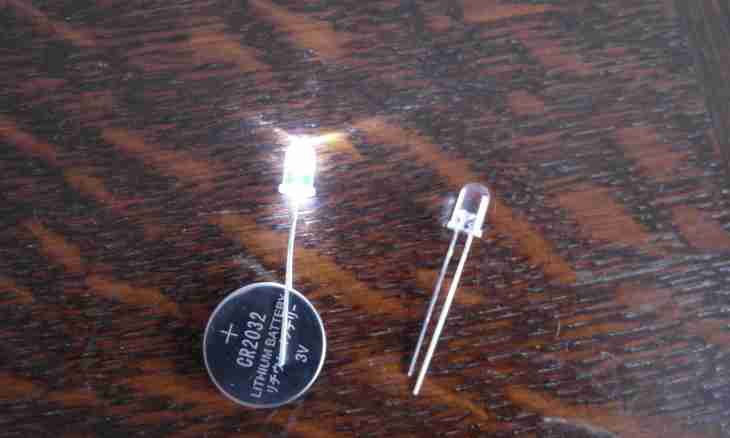Any diode changes the conductivity depending on polarity of tension attached to it. The arrangement of electrodes on its case is specified not always. If the corresponding marking is absent, to define what electrode is connected to what conclusion, it is possible and independently.
Instruction
1. First of all, define polarity of tension on probes of that measuring device which you use. If it multipurpose, transfer it to the ohmmeter mode. Take any diode on which case the arrangement of electrodes is designated. On this designation "triangle" corresponds to the anode, and "stripe" - to the cathode. Try to connect probes to the diode in various polyarnost. If it carries current, so the probe with a positive potential is connected to the anode, and with negative - to the cathode. Remember that the polarity in the mode of measurement of resistance on arrow devices can differ from that which is specified for the modes of voltage measurement and current. And here on digital devices it is usually identical in all modes, but will not prevent to carry out check all the same.
2. If the vacuum diode with direct heat is checked, first of all, find at it a combination of pins between which current passes irrespective of polarity of connection of the measuring device. It is filament, it is also the cathode. In the reference book find the rated voltage of heat of the diode. Give the constant tension of the corresponding size on filament. Connect the probe of the device on which there is a negative potential to one of filament pins, and touch with the positive probe in turn other conclusions of a lamp. Having found a pin at touch of the probe to which resistance, smaller infinity is displayed, draw a conclusion that it is the anode. Powerful vacuum diodes with direct heat (kenotrons) can have two anodes.
3. At the vacuum diode with indirect heat the heater is isolated from the cathode. Having found it, give on it the alternating voltage which operating value equally specified in the reference book. Then among other conclusions find two such between which at a certain polarity there passes current. That from them to which the probe with a positive potential is connected is the anode, opposite - the cathode. Remember that many vacuum diodes with indirect heat have two anodes, and some - and two cathodes.
4. The semiconductor diode has only two conclusions. Respectively, the device can be connected to it in only two ways. Find such provision of an element at which current passes through it. The probe with a positive potential at the same time will be connected to the anode, and with negative - to the cathode.

